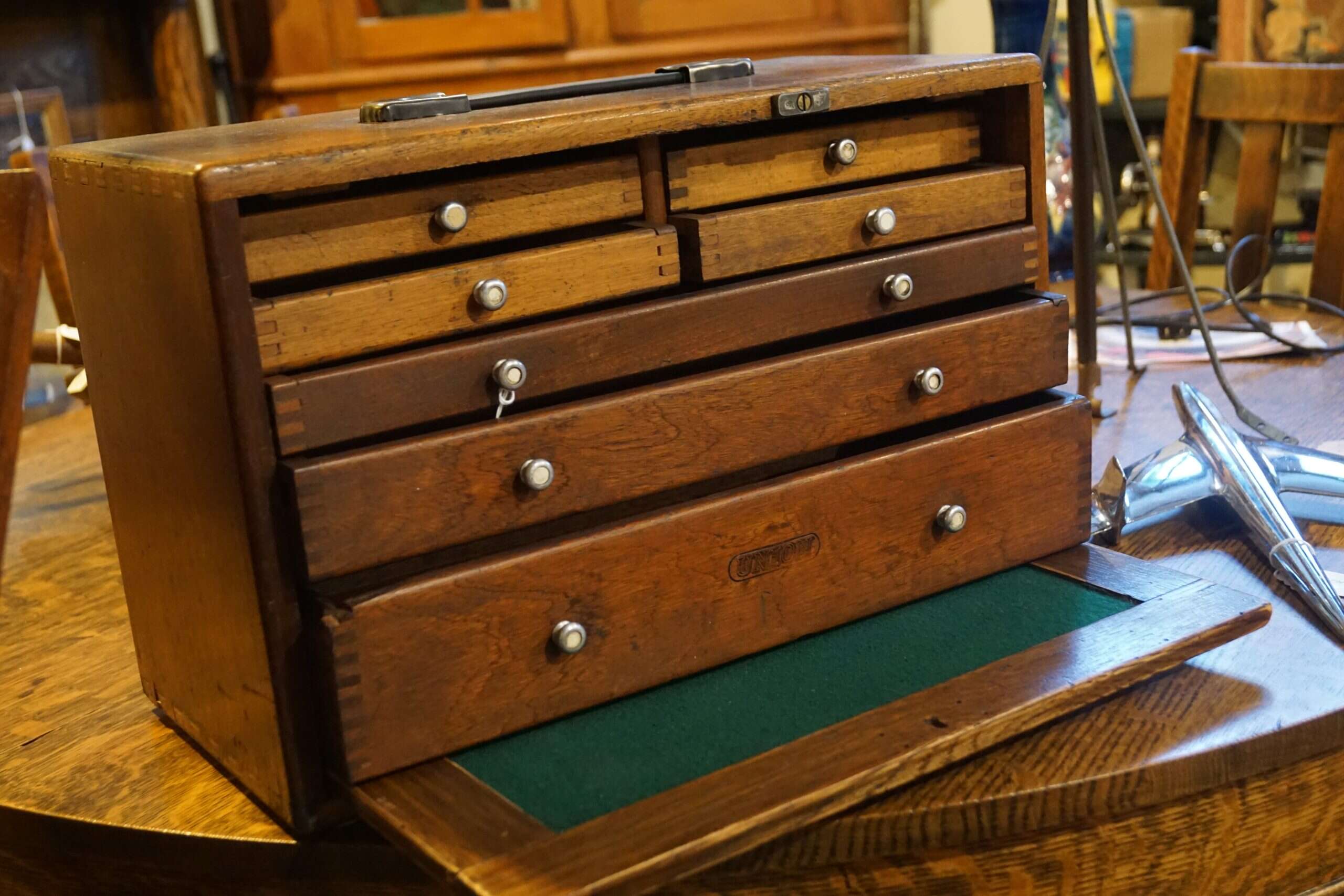

Articles
How To Identify Machinist Tool Chest
Modified: August 28, 2024
Looking for articles on how to identify a machinist tool chest? Our comprehensive guide will help you understand the key features and components to look for.
(Many of the links in this article redirect to a specific reviewed product. Your purchase of these products through affiliate links helps to generate commission for Storables.com, at no extra cost. Learn more)
Introduction
A machinist tool chest is an essential piece of equipment for anyone working in the field of machining or metalworking. It serves as a storage solution for a wide range of tools and accessories, keeping them organized and easily accessible. Whether you are a professional machinist or a hobbyist, having a reliable and well-designed tool chest is crucial for efficiency and productivity.
When it comes to choosing the right machinist tool chest, it’s important to consider various factors such as types, key features, materials, and design. By understanding these aspects, you can make an informed decision and select the most suitable tool chest for your needs.
In this article, we will delve into the world of machinist tool chests and provide you with valuable insights on how to identify the perfect one for your requirements. We will explore the different types of tool chests available, highlight the key features to look for, discuss the materials used in their construction, and guide you through the process of assessing their size, design, locking mechanism, construction quality, interior organization, and additional features and accessories.
By the end of this article, you will have a comprehensive understanding of machinist tool chests and be equipped with the knowledge to make an informed purchasing decision. So let’s dive in and explore the world of machinist tool chests!
Key Takeaways:
- Choose the right machinist tool chest by considering types, key features, materials, size, locking mechanism, construction quality, interior organization, and additional features for enhanced productivity and efficient organization.
- Prioritize durability, security, and convenience when selecting a machinist tool chest, focusing on materials, locking mechanism, construction quality, interior organization, and additional features to safeguard valuable tools and optimize workflow.
Read more: How To Identify A Gerstner Tool Chest
Types of Machinist Tool Chests
When it comes to machinist tool chests, there are several different types available on the market. Each type offers its own advantages and is designed to meet specific requirements. Let’s take a closer look at some of the most common types of machinist tool chests:
- Rolling Tool Chest: A rolling tool chest, also known as a mobile tool cabinet, is equipped with wheels or casters, allowing for easy transportation around the workshop. This type of tool chest is ideal for machinists who work in larger spaces or frequently need to move their tools to different locations.
- Stackable Tool Chest: As the name suggests, a stackable tool chest consists of multiple units that can be stacked or interlocked. This type of tool chest provides versatility and allows for customization, as you can add or remove units based on your storage needs. It is perfect for machinists who have limited workspace and want to maximize vertical storage.
- Portable Tool Chest: A portable tool chest is designed for machinists who need to carry their tools to different job sites or locations. It is typically compact and lightweight, making it easy to transport. Portable tool chests often feature a handle for convenient carrying and may include removable trays or compartments to keep tools organized.
- Benchtop Tool Chest: A benchtop tool chest is designed to sit on top of a workbench or countertop, providing easy access to frequently used tools. This type of tool chest is compact in size and is suitable for machinists with limited space or those who prefer to have their tools within arm’s reach.
- Modular Tool Chest: A modular tool chest offers a high level of customization and flexibility. It consists of individual modules that can be arranged and rearranged according to your specific needs. This type of tool chest is ideal for machinists who want to create a personalized storage system and have the freedom to expand or reconfigure their storage setup as required.
By considering the different types of machinist tool chests available, you can choose the one that best suits your workspace, storage requirements, and mobility needs. Understanding the various options will enable you to make an informed decision and invest in a tool chest that enhances your efficiency and productivity.
Key Features of a Machinist Tool Chest
When selecting a machinist tool chest, it’s important to consider the key features that will enhance its functionality and usability. These features will not only help you keep your tools organized but also improve your overall work efficiency. Here are some key features to look for in a machinist tool chest:
- Durable Construction: A machinist tool chest should be built to withstand the rigors of a workshop environment. Look for chests made from high-quality materials such as steel or heavy-duty plastics. Reinforced corners and edges provide additional strength and durability.
- Secure Locking Mechanism: Keeping your tools safe and secure is essential. Look for a tool chest with a reliable locking mechanism. This could be a key lock, combination lock, or even a digital lock, depending on your preference and level of security required.
- Ample Storage Space: Consider the amount of storage space you need for your tools. Look for a tool chest with multiple drawers of varying sizes, as well as compartments and trays for smaller items. Adjustable dividers or customizable configurations can be beneficial in organizing different tools and accessories.
- Smooth Drawer Slides: Ensure that the drawer slides are of high quality and provide smooth operation. This will make it easier to open and close the drawers, even when they are fully loaded with tools. Look for tool chests with ball-bearing slides for the best performance.
- Ergonomic Handles: Handles should be comfortable to grip and easy to maneuver. Look for tool chests with ergonomic handles that provide a firm grip and minimize strain on your hands and wrists when moving the chest.
- Easy Mobility: If you need to move your tool chest around the workshop, consider a chest with wheels or casters for easy mobility. Look for sturdy wheels that can handle the weight of the loaded chest and maneuver smoothly on various surfaces.
- Weather and Dust Resistance: If your workshop is exposed to moisture or dust, choose a tool chest that offers protection against these elements. Look for chests with weather-resistant seals and gaskets to keep your tools safe and in good condition.
- Additional Features: Some tool chests come with additional features such as built-in power outlets, USB ports, or even Bluetooth connectivity for charging devices or playing music. Consider these features if they align with your specific needs and preferences.
By considering these key features, you can choose a machinist tool chest that meets your requirements and provides a durable, secure, and efficient storage solution for your tools. Remember to prioritize the features that are most important to you and consider the specific needs of your work environment.
Materials Used in Machinist Tool Chests
When it comes to machinist tool chests, the choice of materials plays a significant role in their durability, strength, and overall quality. Different materials offer varying levels of resistance to wear, tear, and other external factors. Here are some common materials used in the construction of machinist tool chests:
- Steel: Steel is one of the most popular materials used in tool chest construction due to its strength and durability. Steel tool chests are highly resistant to dents, scratches, and other forms of damage. They can withstand heavy loads and provide excellent protection for your tools. However, steel chests are generally heavier than those made from other materials.
- Aluminum: Aluminum is known for its lightweight properties, making it an ideal choice for portable and mobile tool chests. It offers good resistance to corrosion and is relatively strong, though not as durable as steel. Aluminum tool chests are great for machinists who often need to transport their tools and require a lightweight yet sturdy storage solution.
- Plastic: Plastic tool chests are lightweight, affordable, and resistant to moisture and chemicals. Although they may not offer the same level of durability as steel or aluminum, plastic chests are ideal for machinists who need a budget-friendly option or require storage for less heavy-duty tools. Plastic chests are also beneficial in environments where there is a risk of electrical conductivity, as plastic does not conduct electricity.
- Fiberglass: Fiberglass tool chests are known for their excellent resistance to moisture and corrosion. They are also lightweight and impact-resistant, making them suitable for rugged environments where tools might be exposed to harsh conditions. Fiberglass chests typically come with strong latches and seals to keep the interior protected from water and dust.
- Wood: While less common than other materials, wood tool chests have a classic and traditional appeal. They are often handmade and offer a unique aesthetic. Wood chests are suitable for machinists who prefer a vintage look or have specific design preferences. However, it’s important to note that wood is less durable than metal or plastic and requires proper maintenance to prevent warping or cracking.
When choosing the material for your machinist tool chest, consider factors such as the environment in which the chest will be used, the weight of your tools, your budget, and your personal preferences. Each material has its own advantages and limitations, so it’s essential to assess your specific needs and make an informed decision.
Remember, the material used in the construction of the tool chest will not only impact its durability but also its weight, mobility, and resistance to external factors such as corrosion and moisture. Therefore, choose a material that aligns with your requirements and ensures the longevity of your machinist tool chest.
Identifying a Machinist Tool Chest by its Size and Design
When it comes to choosing a machinist tool chest, size and design are crucial factors to consider. The size of the chest should accommodate your collection of tools, while the design should provide efficient organization and easy accessibility. Let’s explore how you can identify a suitable machinist tool chest based on its size and design:
Size:
Assessing the size of the tool chest is essential to ensure it can accommodate all your tools and accessories. Consider the following factors when examining the size:
- Overall Dimensions: Measure the available space in your workshop or designated area where the tool chest will be placed. Consider the width, height, and depth of the chest to ensure it fits comfortably in the allocated space.
- Interior Storage Capacity: Evaluate the number and size of drawers, compartments, and trays inside the chest. Ensure they can accommodate your tools, keeping in mind both the current and future additions to your tool collection.
- Weight Capacity: Check the weight capacity of the chest to ensure it can safely hold your tools without compromising its structural integrity. Consider the maximum weight you anticipate storing in the chest and choose one that can bear the load.
Design:
The design of the tool chest should promote efficient organization and easy accessibility. Consider the following aspects of the design:
- Drawer Configuration: Evaluate the layout and configuration of the drawers. Look for chests with a variety of drawer sizes to accommodate different tools. Adjustable dividers or customizable compartments can provide additional versatility in organizing your tools.
- Drawer Slides: Check the quality of the drawer slides. Smooth and robust drawer slides allow for effortless opening and closing of drawers, even when they are fully loaded.
- Labels and Markings: Look for tool chests with labels or markings on the drawers or compartments. This can help you quickly locate and identify specific tools, saving valuable time during your work process.
- Accessibility: Consider how easily you can access your tools. Look for tool chests with drawers that fully extend or have easy access from multiple angles. This ensures that you can reach your tools without any hassle or obstruction.
- Portability: If mobility is important to you, consider a tool chest with features such as wheels or handles for easy transport within your workshop or to different job sites.
By considering the size and design of a machinist tool chest, you can ensure that it meets your storage needs, provides efficient organization, and allows for easy accessibility to your tools. Remember to assess both the physical dimensions and internal layout to make an informed decision that optimizes your workflow and productivity.
Look for a machinist tool chest that is made of durable materials such as steel, has multiple drawers for organization, and includes features such as locking mechanisms and heavy-duty handles for easy transport.
Read also: 9 Best Machinist Tool Chest for 2025
Examining the Locking Mechanism of a Machinist Tool Chest
The locking mechanism of a machinist tool chest is a crucial aspect to consider when choosing the right storage solution for your valuable tools. It plays a vital role in ensuring the security and protection of your tools from theft, unauthorized access, or accidental damage. Here are some key factors to examine when evaluating the locking mechanism of a machinist tool chest:
- Type of Lock: There are several types of locks used in tool chests, each with its own advantages and considerations. Some common types include key locks, combination locks, and digital locks. Consider your preference and the level of security required for your tools.
- Strength and Durability: The lock should be strong and durable enough to withstand attempted break-ins or tampering. Look for locks made from high-quality materials such as hardened steel or brass, as they offer better resistance to forced entry.
- Smooth Operation: A good locking mechanism should operate smoothly, making it easy to secure and unlock the tool chest. Test the lock to ensure it doesn’t jam or require excessive force to operate.
- Key Management: If you opt for a key lock, consider the number of keys provided and the ease of key management. Some tool chests come with multiple keys or even a master key, which can be useful if you have multiple users or need to have spare keys.
- Combination Security: Combination locks offer convenience and eliminate the need for keys. If you choose a combination lock, ensure that it allows for a sufficient number of digits to create a secure and unique combination.
- Resettable Combinations: Some locks allow for resettable combinations, which means you can change the combination as needed. This can be beneficial if you need to grant access to others or if you want to enhance security by periodically changing the combination.
- Additional Security Features: Look for tool chests with added security features such as reinforced case corners or pry-resistant locking mechanisms. These additional features can provide an extra layer of protection against attempted theft or forced entry.
Ultimately, the locking mechanism of a machinist tool chest should provide the level of security and peace of mind you desire for your valuable tools. Take the time to examine and test the lock during the evaluation process to ensure its reliability and effectiveness. Remember, investing in a high-quality lock is crucial to safeguarding your tools and maintaining a secure work environment.
Assessing the Quality of Construction and Durability
When it comes to selecting a machinist tool chest, assessing the quality of construction and durability is of utmost importance. You want a tool chest that can withstand the demands of a busy workshop and provide long-lasting performance. Here are some key factors to consider when evaluating the construction quality and durability of a machinist tool chest:
- Materials Used: Examine the materials used in the construction of the tool chest. Look for chests made from high-quality materials such as steel, aluminum, or heavy-duty plastics. These materials offer durability, strength, and resistance to wear and tear.
- Welding and Joints: Pay attention to the welding and joints on the tool chest. They should be smooth, secure, and free from any signs of weak or incomplete welds. Quality welding ensures the structural integrity of the chest and prolongs its lifespan.
- Reinforcements: Check for reinforcements in critical areas of the tool chest, such as corners, edges, or stress points. Reinforcements, such as reinforced corners or extra bracing, enhance the overall strength and durability of the chest.
- Finishing and Coatings: Look for tool chests with quality finishing and coatings. These can include powder coatings for corrosion resistance or scratch-resistant finishes. A good finish not only enhances the aesthetic appeal of the chest but also protects it from rust or other forms of damage.
- Weight Capacity: Consider the weight capacity of the tool chest. It should be able to handle the weight of your tools without sagging or compromising its structural integrity. Look for chests with sturdy construction and reinforced drawer slides to support heavy loads.
- Impact Resistance: A durable tool chest should be able to withstand occasional impacts or minor accidents without denting or breaking. Look for chests made from materials that offer good impact resistance, reducing the risk of damage to your tools if the chest is accidentally bumped or dropped.
- Weather and Moisture Resistance: If your workshop is exposed to moisture or extreme weather conditions, consider a tool chest with weather-resistant features such as seals or gaskets. These will help prevent water or dust from seeping into the chest and potentially damaging your tools.
- Customer Reviews and Ratings: Research the customer reviews and ratings of the tool chest to gauge its overall quality and durability. Pay attention to feedback regarding the construction, sturdiness, and durability of the chest from individuals who have used it in real-world workshop environments.
By carefully assessing the construction quality and durability of a machinist tool chest, you can ensure that it is built to last and can withstand the demands of your work environment. Remember, investing in a high-quality, durable tool chest is a long-term investment that will protect and preserve your valuable tools while providing efficient storage and organization.
Evaluating the Interior Organization and Compartments
The interior organization and compartments of a machinist tool chest play a vital role in keeping your tools organized, accessible, and protected. An efficient and well-designed interior layout can enhance your productivity and workflow. Here are some key factors to consider when evaluating the interior organization and compartments of a machinist tool chest:
- Drawer Configuration: Examine the number and size of drawers in the tool chest. Look for a mix of drawer sizes to accommodate tools of various shapes and sizes. This allows for efficient storage and easy access to your tools.
- Dividers and Compartments: Check if the drawers have dividers or additional compartments. Dividers can help you separate and organize different types of tools or accessories within the same drawer. Adjustable dividers offer flexibility to customize the compartments as per your specific storage needs.
- Trays and Trays: Look for tool chests that have removable trays or trays that can be lifted for easy access to the tools underneath. Trays provide an additional layer of organization and can be used to store smaller items or frequently used tools.
- Labeling and Markings: Evaluate if the drawers or compartments have labels or markings. Clear labels make it easier to identify the contents of each drawer, saving time and effort in locating specific tools.
- Depth and Height of Compartments: Consider the depth and height of the compartments. Deep compartments can accommodate larger tools or bulky items, while shallower compartments are ideal for smaller tools or accessories.
- Accessibility: Examine how easily you can access tools in each compartment. Look for tool chests that allow for full extension of drawers, enabling you to reach tools at the back without any struggle or obstruction.
- Ease of Organization: Consider how user-friendly the interior organization of the chest is. Evaluate if it allows you to arrange tools in a logical and systematic manner, based on your work requirements and personal preferences.
- Modularity and Customization: Some tool chests offer modular designs that allow you to customize the arrangement of compartments or add additional modules as your tool collection grows. Assess if the chest offers this flexibility to adapt to your changing storage needs.
By evaluating the interior organization and compartments of a machinist tool chest, you can ensure that it provides efficient storage and organization for your tools. A well-thought-out interior layout will enable you to find and retrieve tools quickly, enhance your productivity, and maintain a clutter-free work environment.
Checking for Additional Features and Accessories
When selecting a machinist tool chest, it’s important to consider any additional features and accessories that can enhance its functionality and usability. These features can provide added convenience and customization options for your specific needs. Here are some key features and accessories to check for:
- Locking Mechanism: Ensure that the chest has a secure and reliable locking mechanism to protect your tools from theft or unauthorized access.
- Power Outlets and USB Ports: Some tool chests are equipped with built-in power outlets and USB ports. These features allow you to conveniently charge your power tools or electronic devices without the need for additional power sources.
- Integrated Lighting: Look for tool chests that have integrated lighting, either on the exterior or interior, to provide better visibility when accessing your tools in low-light conditions.
- Back Panel Pegboard or Tool Rack: A tool chest with a back panel pegboard or tool rack provides additional storage and organization options for frequently used tools. This feature allows you to hang tools for easy access and quick identification.
- Drawer Liners: Drawer liners help protect your tools from scratches and damage. Look for tool chests that come with quality drawer liners or consider purchasing them separately for added protection.
- Integrated Work Surface: Some tool chests feature an integrated work surface on top, providing a convenient and sturdy area to perform various tasks such as assembly, repairs, or measurements.
- Casters and Wheels: If mobility is important to you, consider a tool chest with sturdy casters or wheels. This allows for easy movement of the chest around your workshop or to different job sites.
- Accessory Trays and Bins: Additional accessory trays and bins can be useful for organizing smaller tools, accessories, or parts. These trays and bins can be placed on top of the chest or inside the drawers for easy access.
- Tool Dividers or Foam Inserts: Look for tool chests that come with dividers or foam inserts to keep your tools securely in place. These dividers or foam inserts prevent tools from shifting during transportation and provide added protection against damage.
- Customization Options: Consider if the tool chest offers customization options such as the ability to add or remove drawers, compartments, or modules based on your specific needs. This allows for a personalized and adaptable storage solution.
By checking for these additional features and accessories, you can find a machinist tool chest that offers greater convenience, organization options, and customization possibilities. Prioritize the features that align with your specific needs and work requirements, enhancing your overall productivity and efficiency.
Read also: 12 Amazing Machinist Protractor for 2025
Conclusion
Choosing the right machinist tool chest is essential for any machining or metalworking professional. A well-designed and reliable tool chest not only keeps your tools organized but also enhances your efficiency and productivity in the workshop. Throughout this article, we have explored various aspects of machinist tool chests and provided valuable insights on how to identify the perfect one for your needs.
First, we discussed the different types of machinist tool chests available, such as rolling, stackable, portable, benchtop, and modular tool chests. Understanding the different types allows you to select the one that best suits your workspace and mobility requirements.
We then moved on to the key features of a machinist tool chest, emphasizing the importance of durable construction, a secure locking mechanism, ample storage space, smooth drawer slides, ergonomic handles, and additional features that enhance convenience and functionality.
Materials used in the construction of tool chests were also discussed, including steel, aluminum, plastic, fiberglass, and wood. Each material has its own advantages and considerations, and choosing the right material depends on factors such as durability, weight, and budget.
Next, we explored how to identify a machinist tool chest based on its size and design. We discussed the importance of evaluating the overall dimensions, interior storage capacity, weight capacity, drawer configuration, and accessibility in determining the right tool chest for your needs.
Examining the locking mechanism of a tool chest is crucial to ensure the security of your valuable tools. We highlighted factors such as the type of lock, strength and durability, smooth operation, key management, and additional security features to consider when assessing the locking mechanism.
We then emphasized the significance of assessing the construction quality and durability of a tool chest. Factors such as materials used, welding and joints, reinforcements, finishing and coatings, weight capacity, impact resistance, and weather resistance were discussed in detail.
Evaluating the interior organization and compartments of a tool chest is vital for efficient storage and easy accessibility. Considering the drawer configuration, dividers and compartments, trays and bins, labeling and markings, depth and height of compartments, accessibility, ease of organization, and modularity enables you to find the right tool chest that meets your storage needs.
Lastly, we addressed the importance of checking for additional features and accessories in a machinist tool chest. Features such as locking mechanisms, power outlets and USB ports, integrated lighting, back panel pegboards or tool racks, drawer liners, integrated work surfaces, casters and wheels, accessory trays and bins, tool dividers or foam inserts, and customization options provide added convenience and customization possibilities.
In conclusion, selecting the perfect machinist tool chest requires careful consideration of various factors including types, key features, materials, size and design, locking mechanism, construction quality and durability, interior organization and compartments, and additional features and accessories. By understanding and evaluating these aspects, you can make an informed decision and invest in a tool chest that enhances your productivity, protects your tools, and keeps your workspace organized and efficient.
Ready to upgrade your workspace organization? Dive into our latest article on the 14 best tool storage options for 2024. Whether you're a professional craftsman or a weekend warrior, finding the right storage for your tools not only keeps your gear in tip-top shape but also enhances your efficiency and productivity. Don’t miss out on discovering the perfect setup that suits your needs and space.
Frequently Asked Questions about How To Identify Machinist Tool Chest
Was this page helpful?
At Storables.com, we guarantee accurate and reliable information. Our content, validated by Expert Board Contributors, is crafted following stringent Editorial Policies. We're committed to providing you with well-researched, expert-backed insights for all your informational needs.
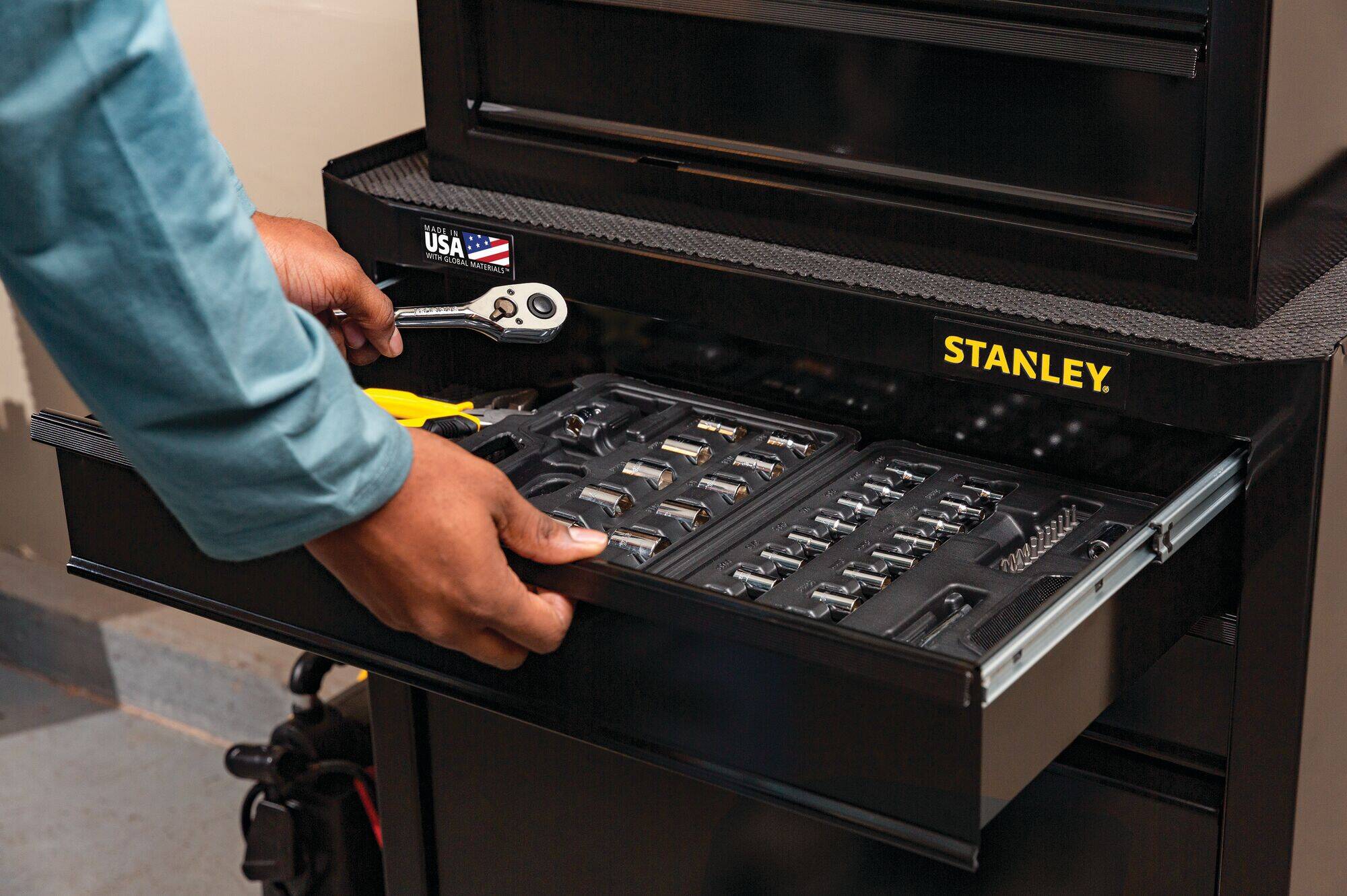
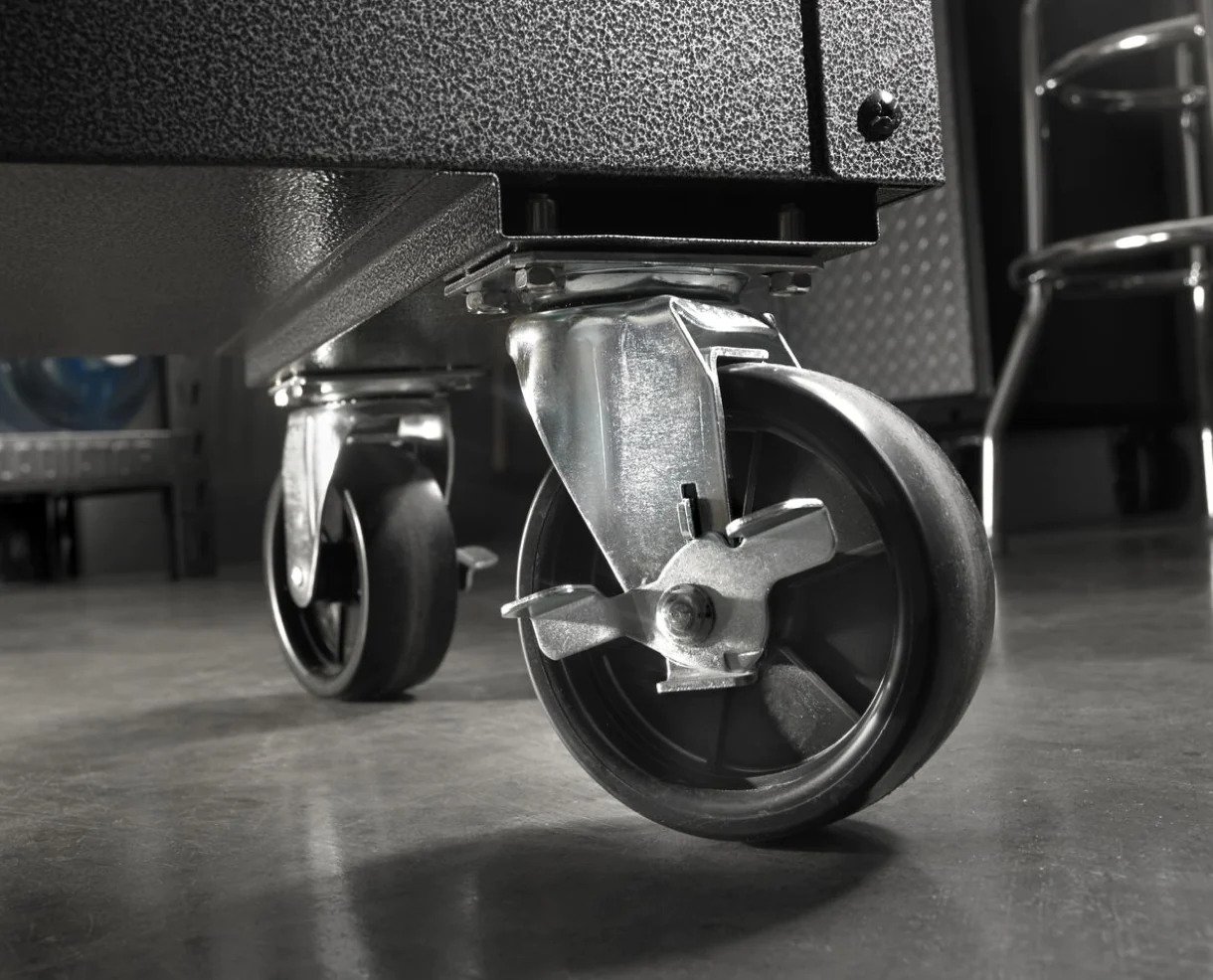
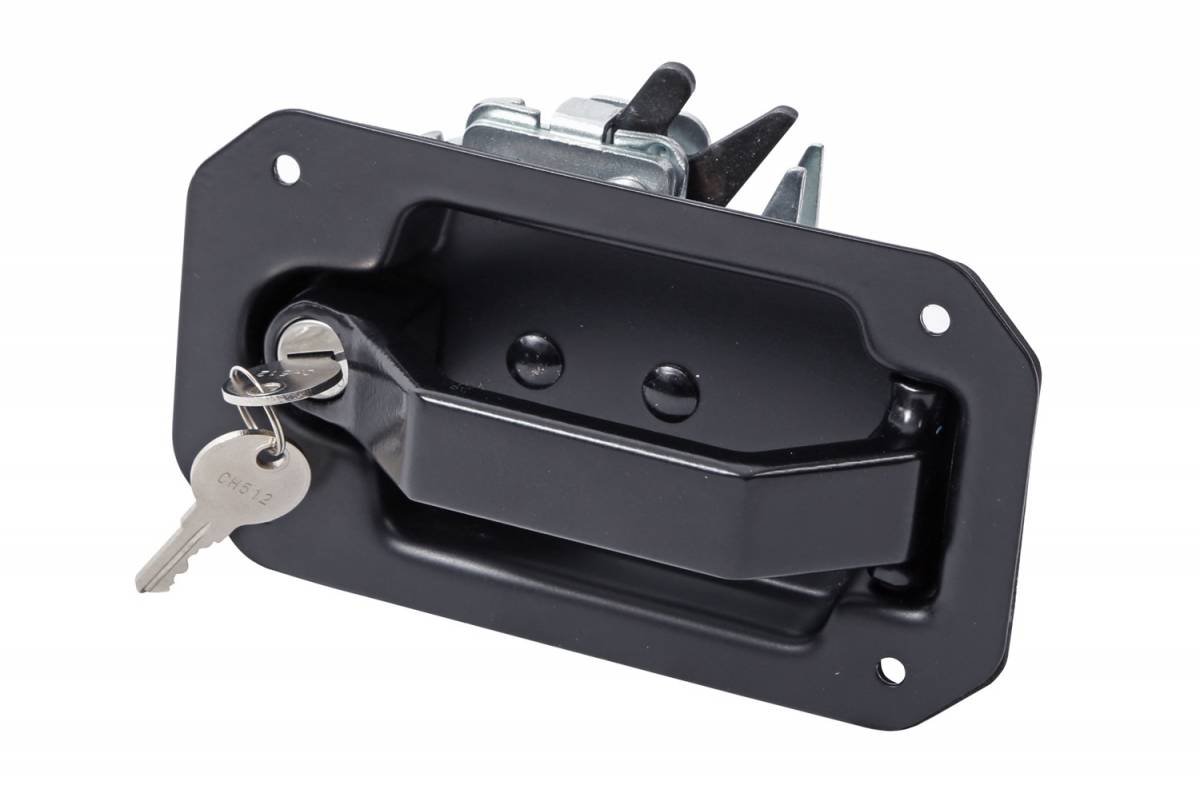
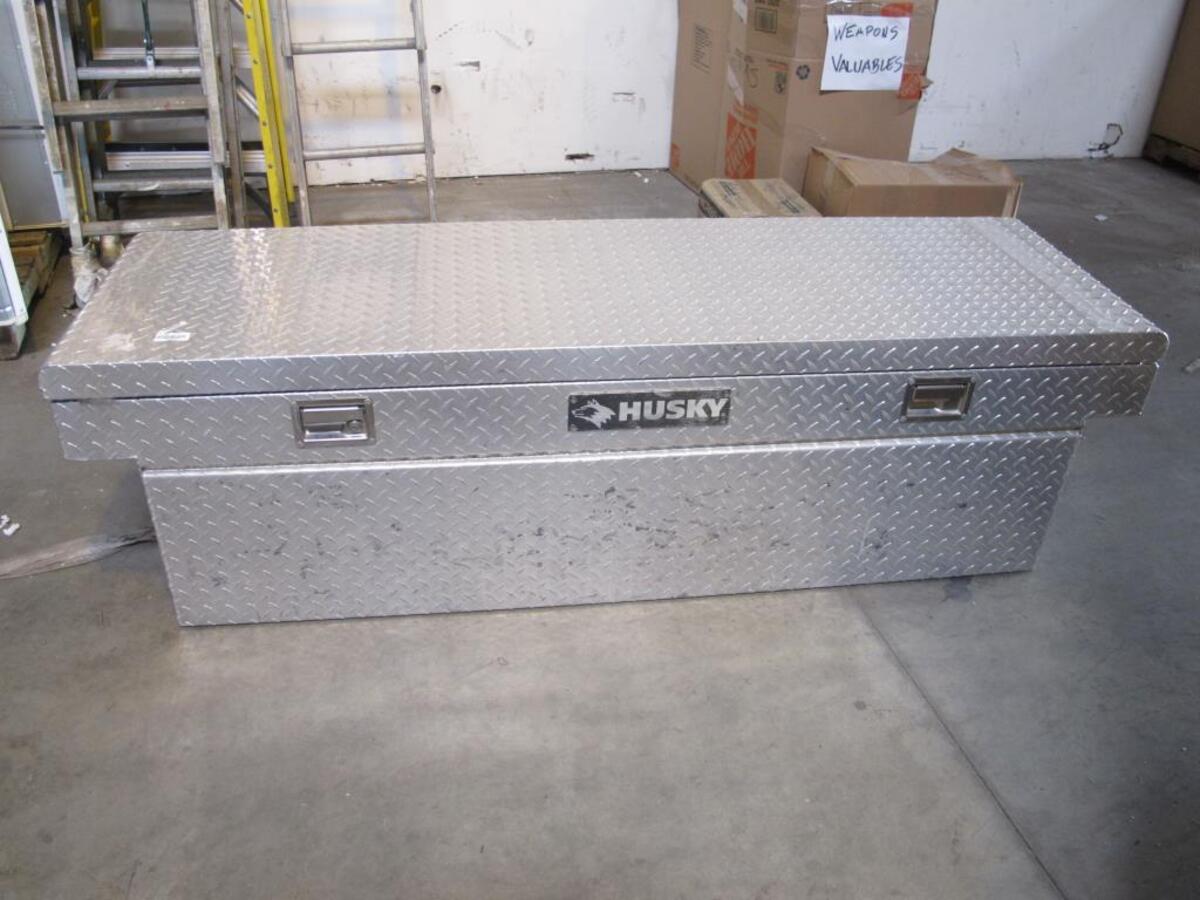
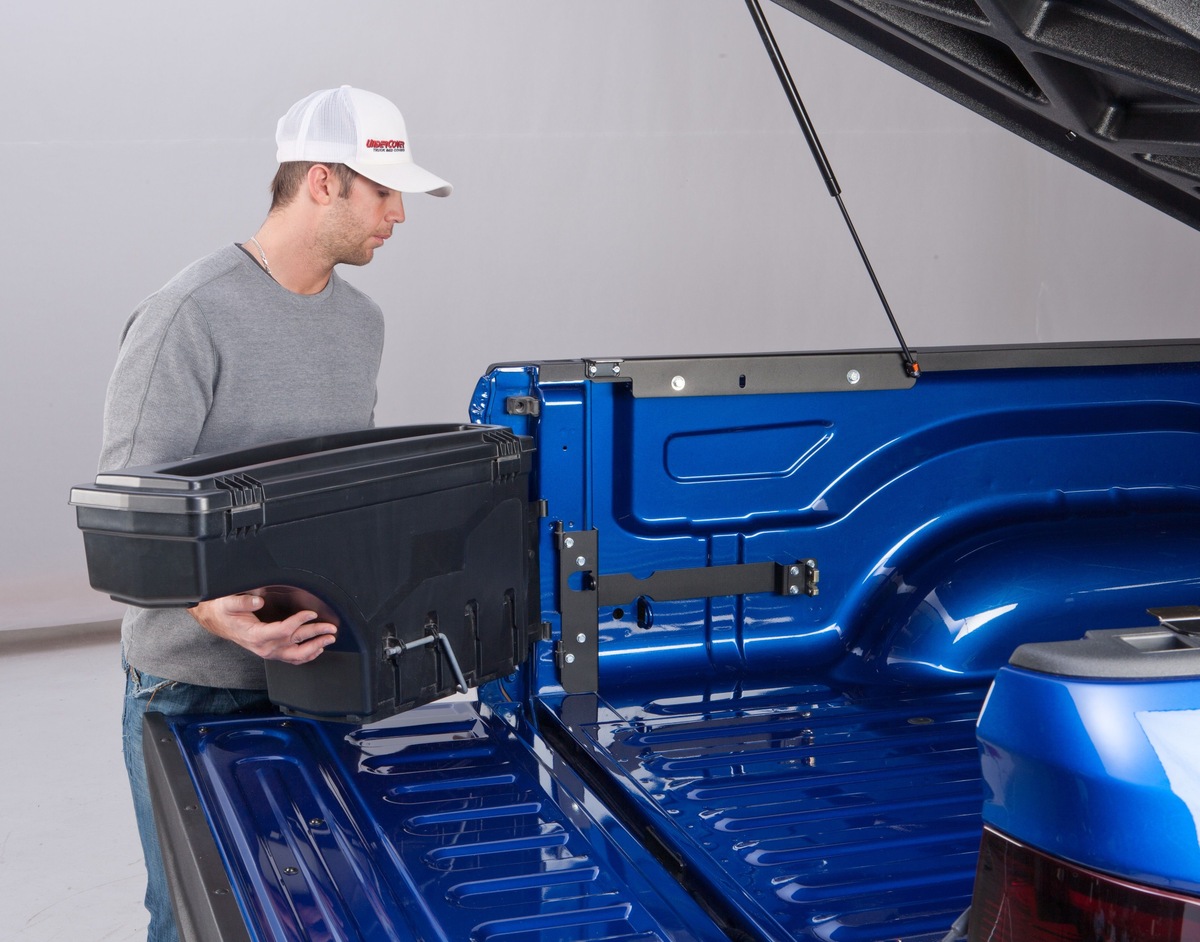
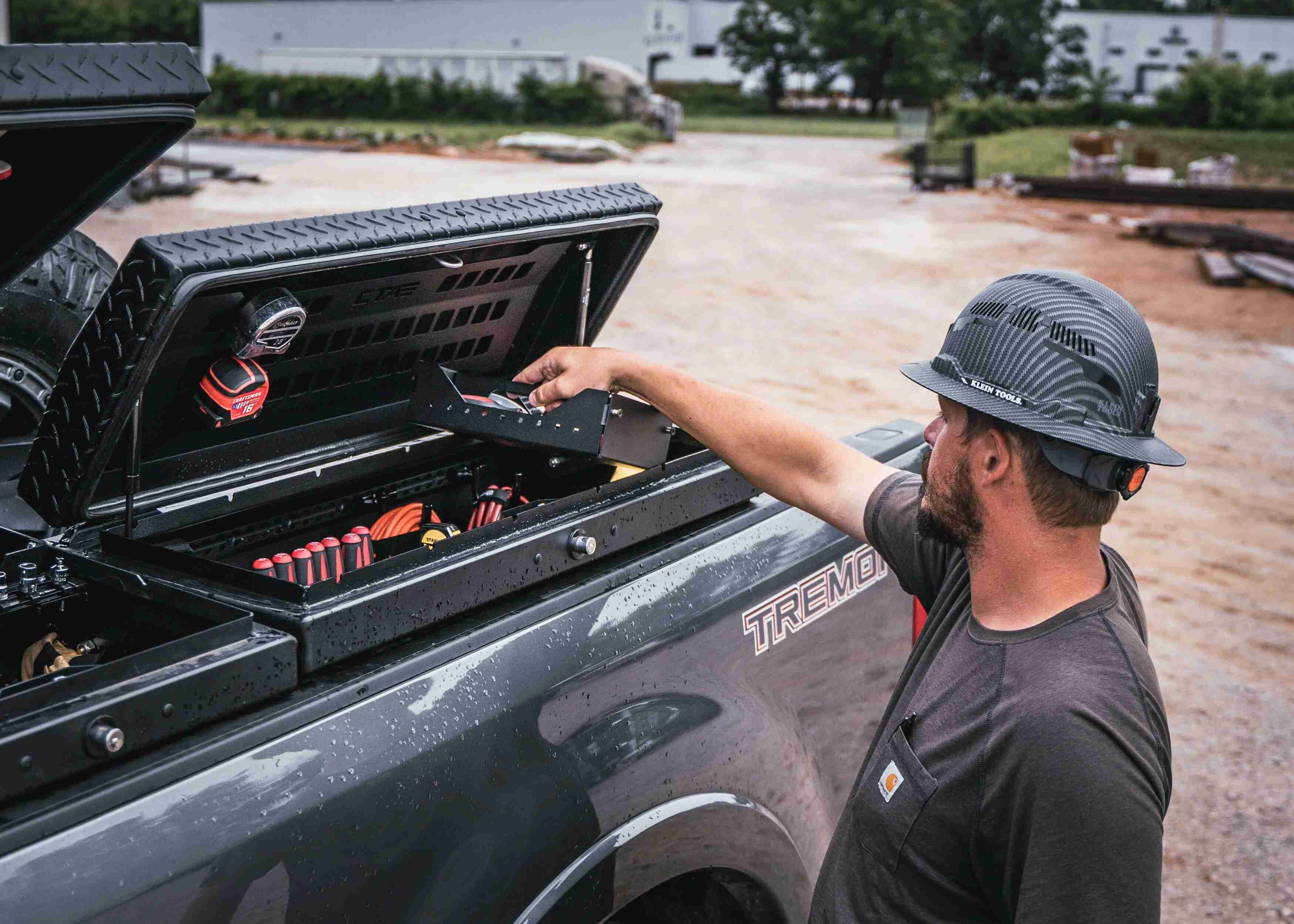
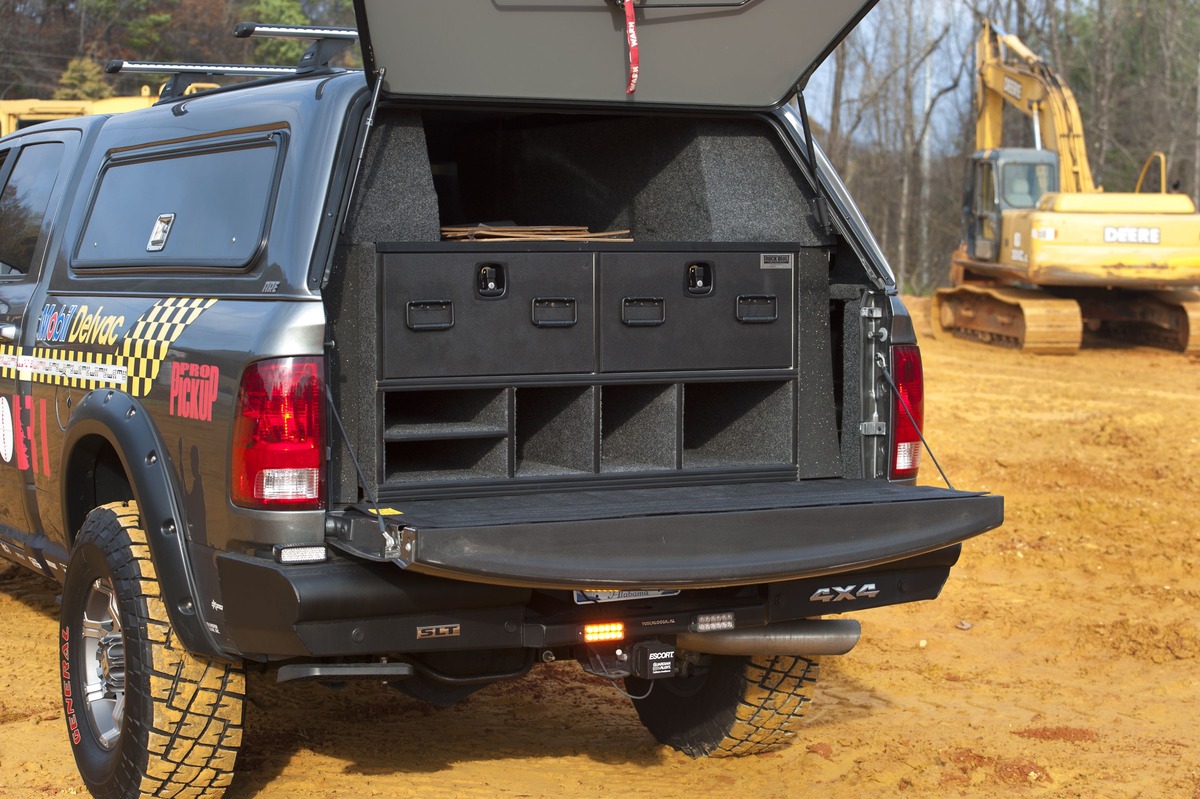
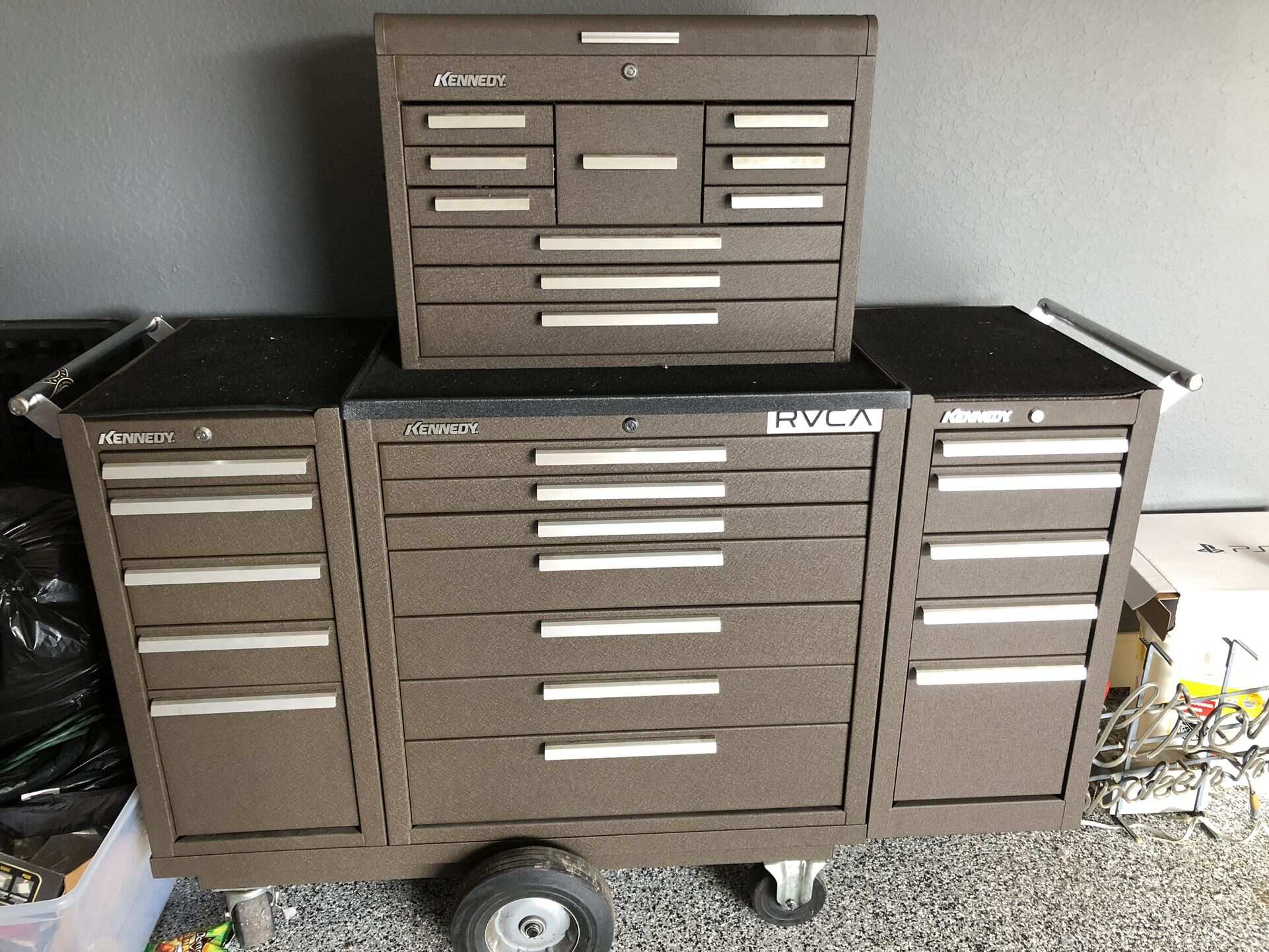
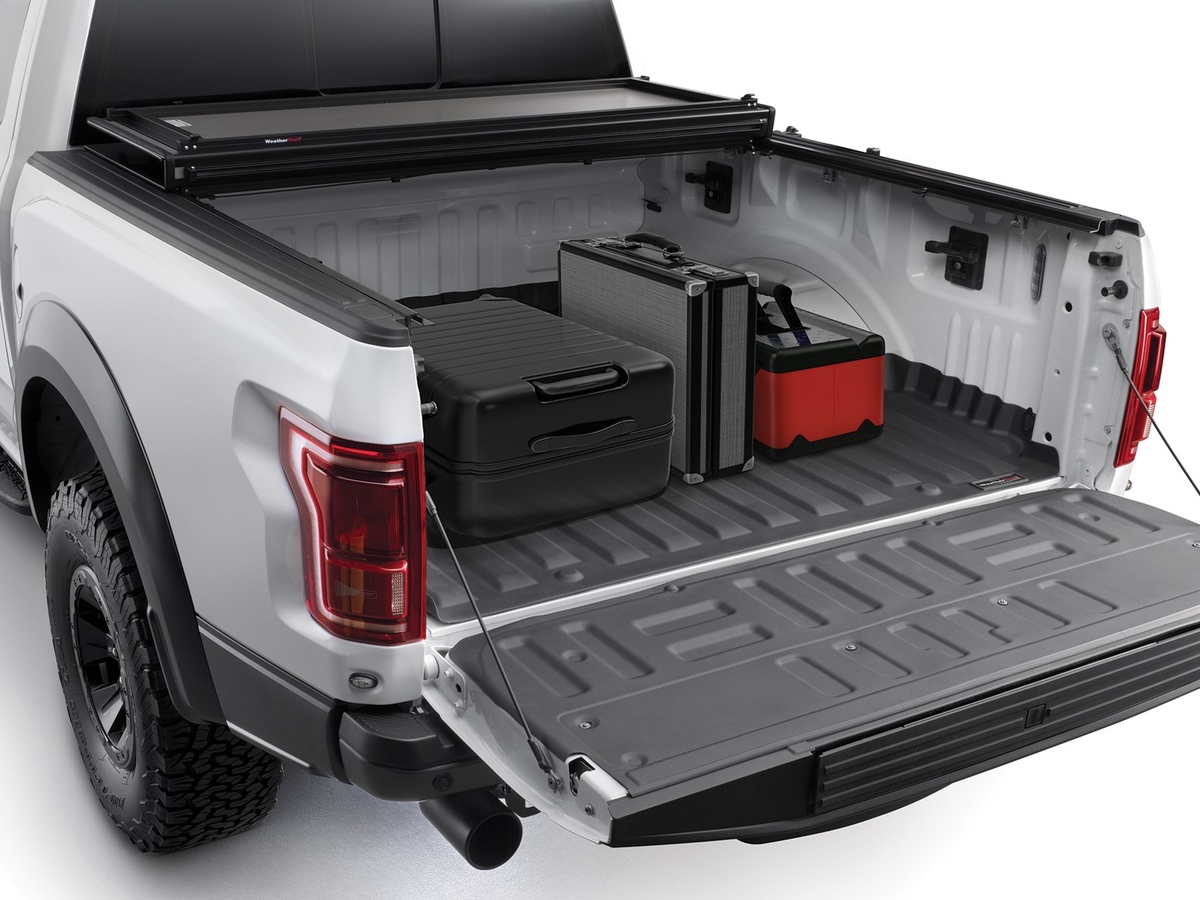
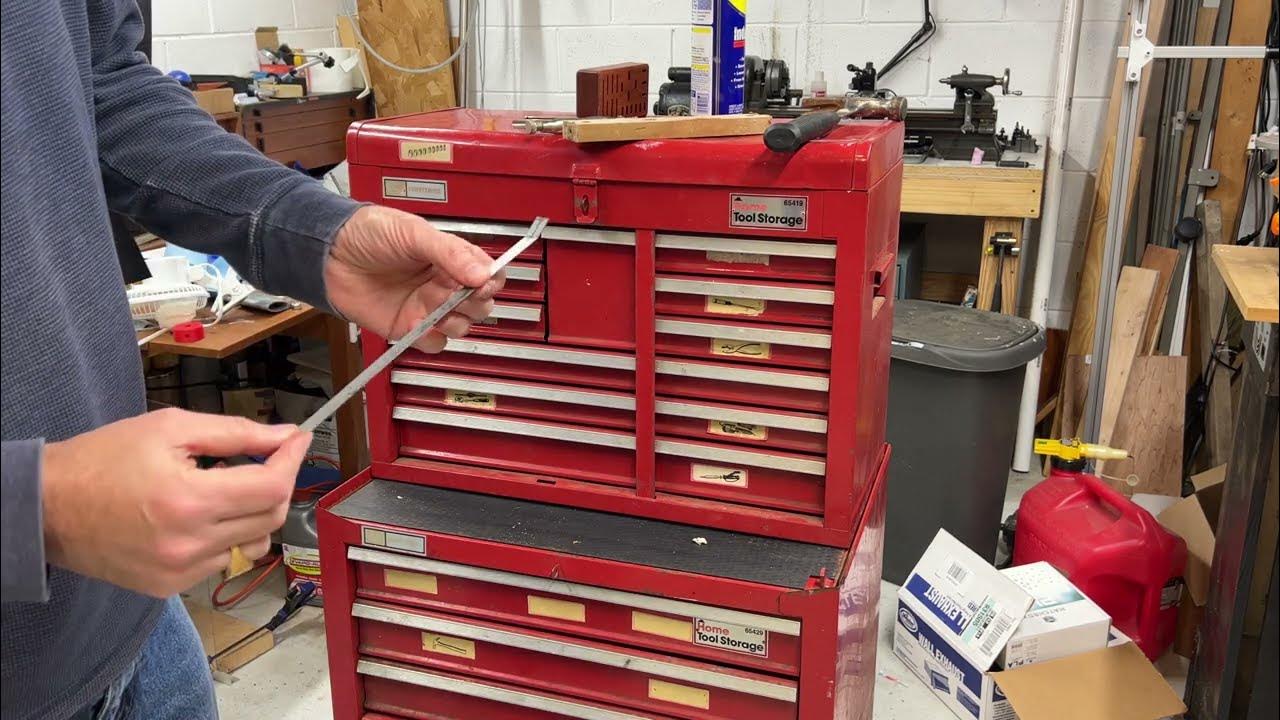

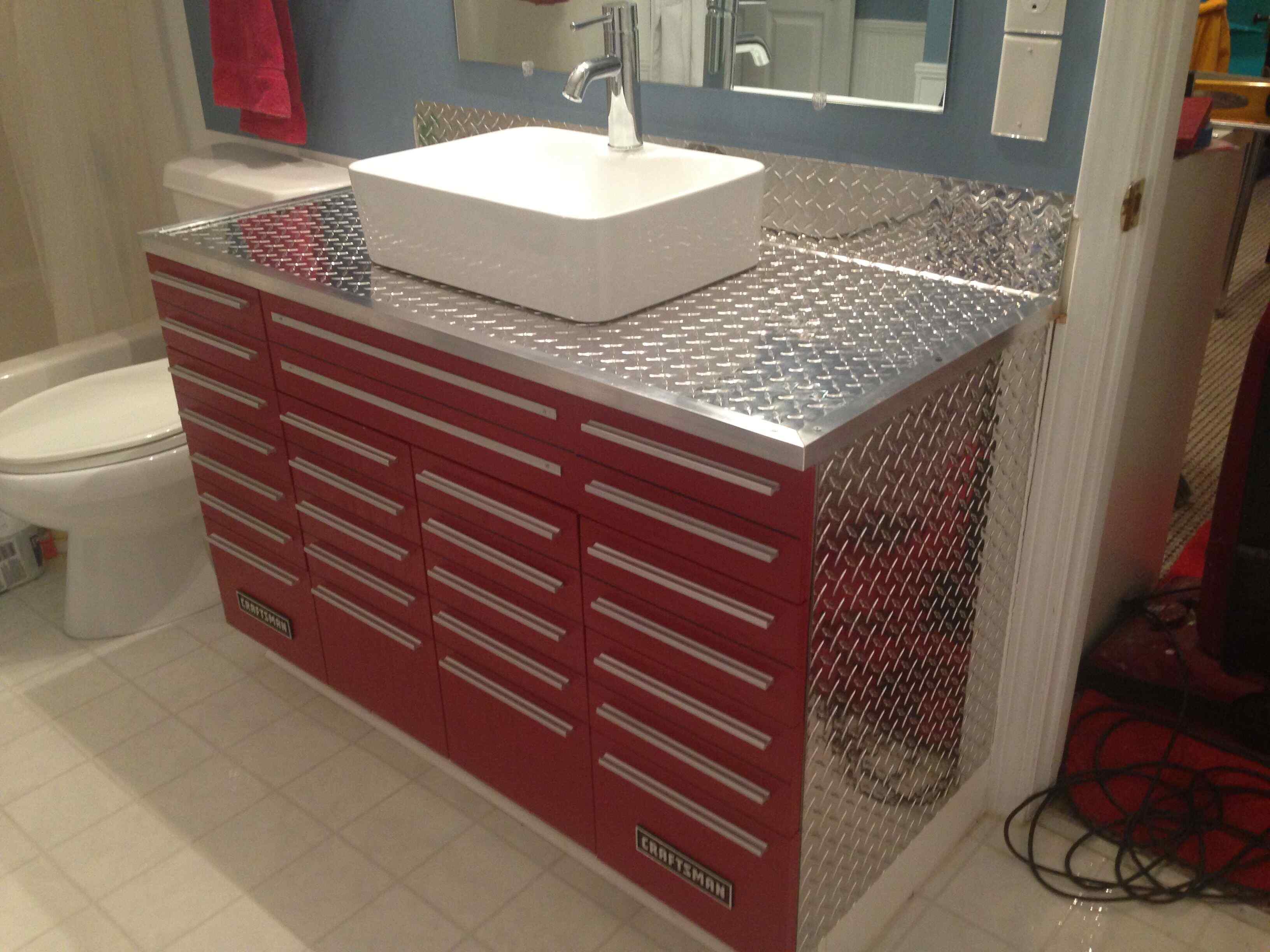
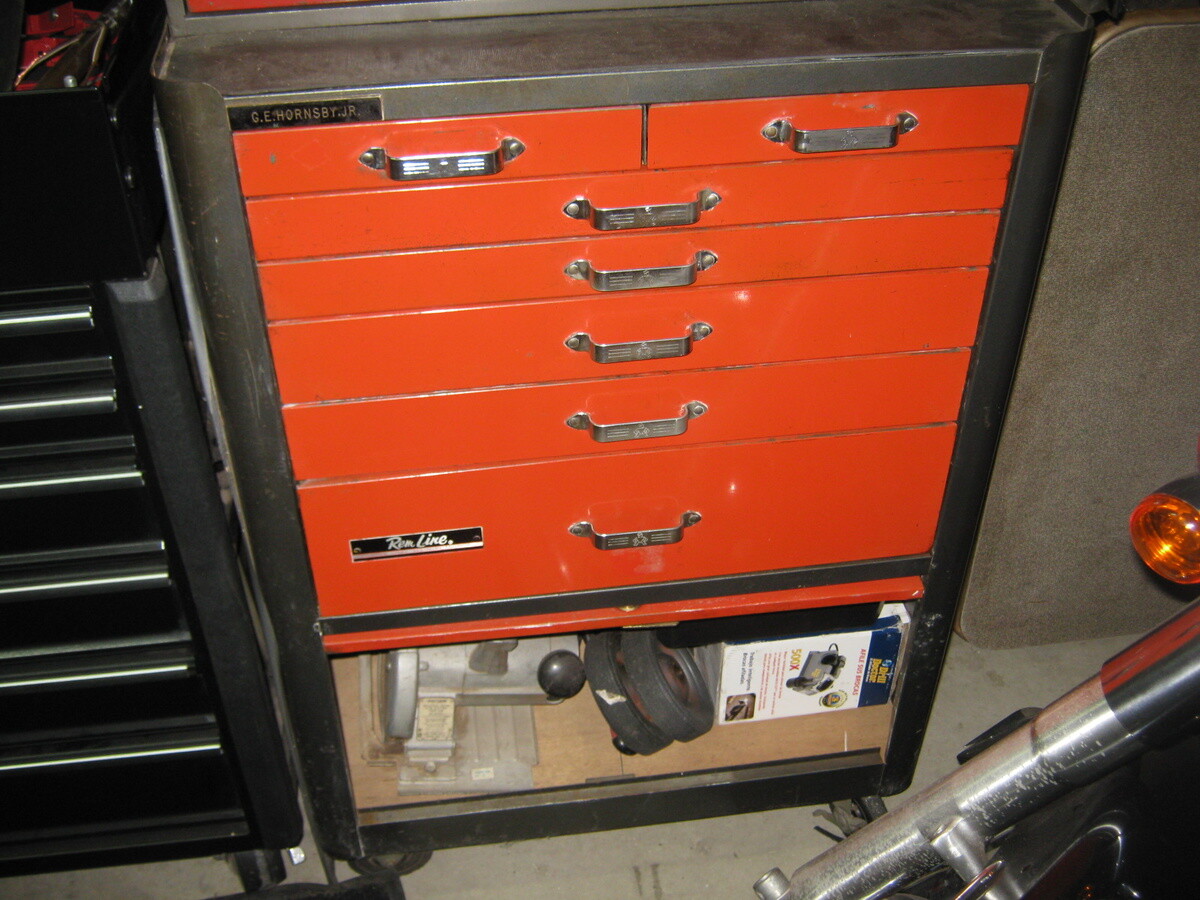

0 thoughts on “How To Identify Machinist Tool Chest”